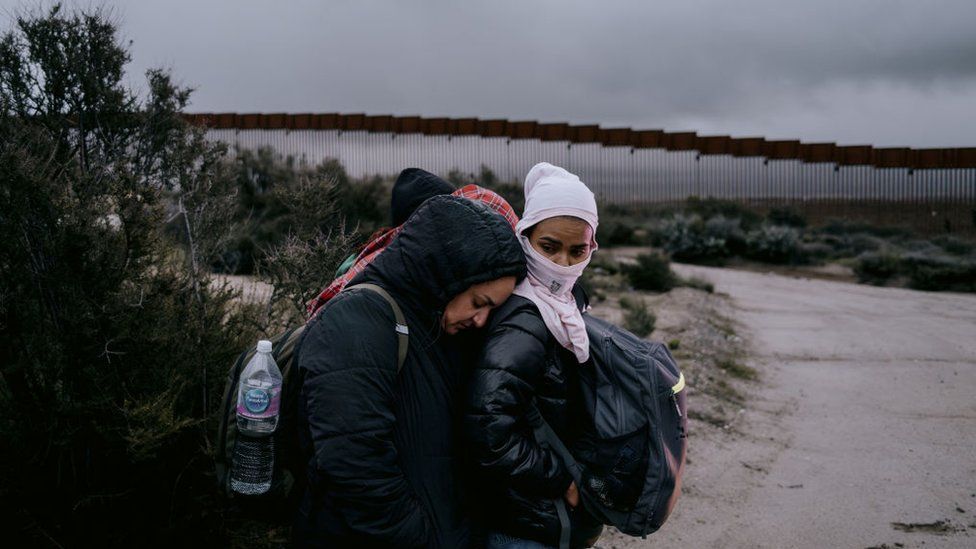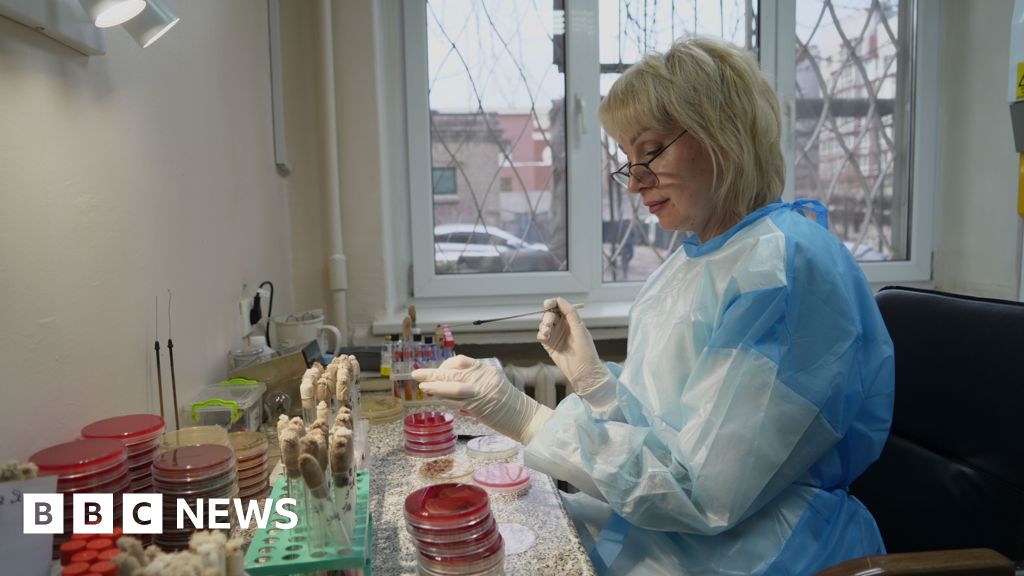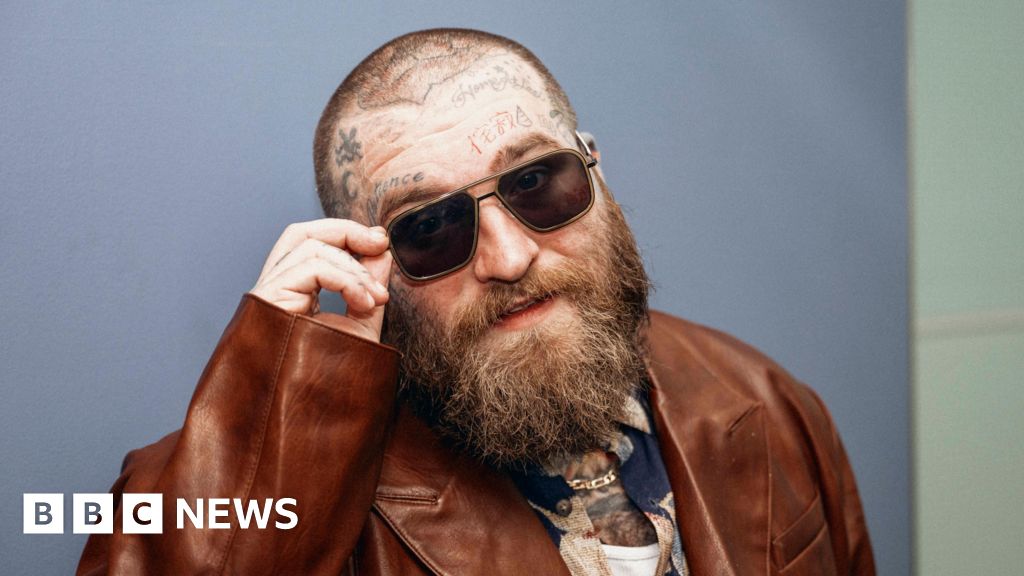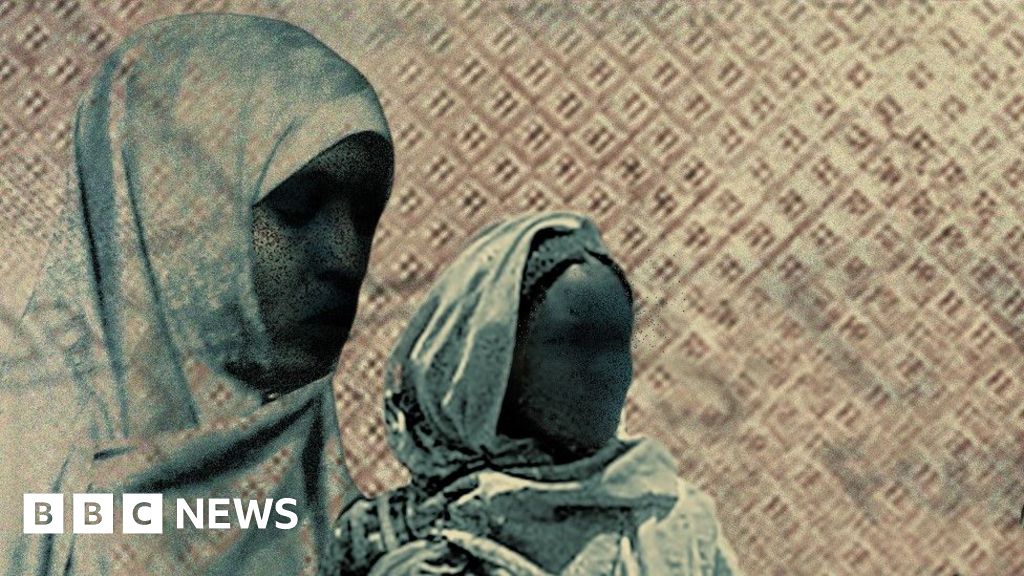ARTICLE AD BOX
 Image source, Getty Images
Image source, Getty Images
A surge of illegal border crossings has fuelled US political debate
By Sumi Somaskanda & Naomi Choy Smith
in San Diego
On a blustery morning last month, volunteer Adriana Jasso raised the flaps to a tent propped up against the massive steel bars of the fence that straddles this stretch of the US-Mexico border. On her side, plastic tables were piled with apples, packets of hot chocolate, mylar blankets and stacks of ponchos - supplies waiting for hungry and tired migrants who had travelled for weeks, or even months, to reach California.
On the other side, visible through the gaps in the towering barrier, a group of more than 100 people - from countries including Ecuador, Colombia, China and Rwanda - huddled together, waiting to be let through on to US soil. This border point south of San Diego is now one of the busiest along the entire US-Mexico frontier, which stretches around 1,950 miles (3,140km) from here to eastern Texas and the Gulf of Mexico.
A record surge of illegal border crossings in recent years has fuelled the debate over immigration and border security, emerging as a key voter concern ahead of the US presidential election in November. While the border crisis has mostly centred on Texas, where Republican Governor Greg Abbott has waged a fight with President Joe Biden over his immigration policies, recent figures show the geography of the US migration problem is shifting west to border states like Arizona and California.
In San Ysidro, some 16 miles south of wealthy San Diego, crossings were up 85% in February from the previous year compared with Texas, which saw illegal entries dip during the same period. The BBC's US partner CBS reported that in January, the border crossing in Del Rio, Texas, recorded a few hundred apprehensions a day - compared to 2,300 daily migrant crossings in December.
The migrant flow shift is due in part to the Texas governor's clampdown on illegal migration and Mexican authorities tightening security across the border as well.
The sheer number of people arriving has overwhelmed resources in the San Diego area; after migrants are apprehended and processed at a facility near the border, local officials told the BBC that up to 1,000 people a day are being released at city train and bus stops.
Just after 8am, Border Patrol agents arrived and opened the gate to begin intake on the strip of land where migrants have been waiting. Men are allowed only one layer of clothing, women and children two; they line up and pull off jackets and shoelaces (which are not allowed at the processing centre due to safety concerns), packing them into plastic bags or backpacks. From there, they file on to buses and head to a processing centre, where they are registered and can file a claim for asylum. The vast majority are heading to towns and cities across the US where they have family, friends and networks.
The influx of migrants scattered across the country has strained communities, frustrating local officials and placing immigration at the top of the political agenda. A Wall Street Journal poll released in March ranked immigration among the top two issues for registered voters in seven battleground states - Arizona, Georgia, Michigan, Nevada, North Carolina, Pennsylvania and Wisconsin. At least 72% of those voters across the seven states said the country's immigration policy and border security were heading in the wrong direction, according to the survey.
Image source, Getty Images
Image caption,The sheer number of people arriving has overwhelmed resources along California's southern border
Even in California, the nation's largest Democratic stronghold, 62% of registered voters said US borders were not secure in preventing illegal border crossings compared to 30% who said they were secure, according to a UC Berkeley Institute of Government Studies poll released in January.
Former President Donald Trump, the presumptive Republican presidential nominee, has accused Mr Biden of creating a "bloodbath" at the US-Mexico border. The president accused Mr Trump of scuppering a bipartisan immigration bill for political gain.
The border featured heavily during President Trump's time in office - his administration built roughly 15 miles of new barriers and reinforced or increased the height along another 350 miles of existing border wall structure. That includes near San Diego, where the Trump administration completed bollard fencing in 2019 that juts into the Pacific Ocean along a stretch of beach just north of Tijuana, Mexico, to stop migrants from swimming into the country. According to a study published in the JAMA medical journal, this has led to a significant increase in migrant drowning deaths.
Nora Vargas, chairwoman of the Board of Supervisors in San Diego County, has witnessed ups and downs of migration over several years. Since the Biden administration in May 2023 lifted Title 42, a pandemic-era policy that allowed US officials to expel migrants who came to the border, Vargas says around 80,000 migrants have arrived through San Diego County.
The Biden administration's attempt to stop migrants from crossing illegally and encourage them to apply for asylum via an app has been plagued by technical issues, and it has not appeared to slow the number of people crossing, due to the push factors like violence and poverty, says Vargas.
"We should be able to find ways to ensure that people are treated with dignity, with respect, especially if you're fleeing persecution," she said.
Vargas tells the BBC her county had an effective solution for mitigating the crisis: migrant transitional centres, or short-term facilities where newly arrived migrants could access food and medical treatment, charge their phones, and plan their next steps: migrants arriving here are not staying. Instead, they're moving on to other towns and cities across the US, where they have a network of family or friends.
But as the numbers of asylum seekers arriving everyday ticked up, the county exhausted its funding. Vargas wrote an urgent letter to the White House in February, asking for federal assistance to help cover the estimated $1.5m (£1.2m) a month required to operate the facilities.
Funding didn't arrive, however. The county was forced to close the transitional centre. Vargas blames Congress for failing to pass the Senate's bipartisan package of measures including funding for tackling the immigration crisis at the border.
Image source, Getty Images
Image caption,The Trump administration built roughly 15 miles of new border barriers
In the absence of transitional centres, Border Patrol agents are now dropping off some 900 people a day at bus and train stations in San Diego, a city of around 1.3 million people. At the Iris Avenue Transit Center, a swelling crowd of migrants milled around on a Sunday afternoon earlier this month, exhausted and relieved.
Men and women from Brazil, India, China and Latin America called family members and consulted maps, trying to plot a path to their final destination. A group of young men from Guinea told the BBC they'd fled political instability, flying to Istanbul, then to Colombia, then trekking to the US.
"Nobody wants to leave their home," a young woman from Ecuador said, blaming gangs and mafia groups in her home country that created an atmosphere of fear and violence.
Two men from Medellín, Colombia, told the BBC they made the journey to the US to find work.
Jim Desmond, a member of the San Diego County Board of Supervisors, visited the Iris Transit Center recently and told the BBC that non-profits are helping many of the migrants get to the airport, where they are hoping to secure a ticket to their final destination. Now, the airport itself is becoming a shelter, he says.
"To have tourists come, you know off a flight or they're leaving, we don't want it to be their first or last impression, to see people sleeping and spending the night at San Diego airport," he said.
Desmond is raising the alarm in his county over what he calls the unimpeded flow of people, many of whom he believes have not been properly vetted. It is not Congress, he says, but the White House that should be finding pathways to bolster legal immigration and swiftly clamp down on those who cross illegally.
The White House has signalled that President Biden is eyeing executive action on securing the border, in lieu of a bill from Congress. California Governor Gavin Newsom, who has referred to the asylum system as "broken" and called for federal support for states and cities, has sought to put the blame squarely on Republican lawmakers and Mr Trump for rejecting border legislation.
"It used to be in the Obama administration, in the Trump administration, and Bush and even Clinton, that migrants coming across the border illegally would run from border patrol agents. Now they're running to them," Desmond said. "And they're being processed and being dropped off and jumping ahead of the line. And anytime you have some entity that allows people to jump ahead of the line, chaos ensues."
Back in San Ysidro, a young woman named Olga, wearing a transparent poncho over a pink winter coat, gripped a cup of coffee as she explained that she'd departed Ecuador four weeks earlier, to escape a different kind of chaos - soaring gang violence and economic hardship.
She left three children with family in Ecuador and is hoping to reunite with her fourth child, who is in the US. The journey had shaken her. "There were good people but also bad people," she said through tears.
Image source, Getty Images

 9 months ago
46
9 months ago
46








 English (US) ·
English (US) ·